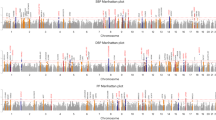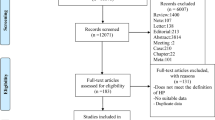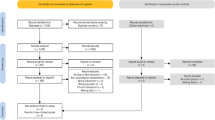Abstract
Aim:
The genetic background of orthostatic blood pressure dysregulation remains poorly understood. Since the renin-angiotensin system plays an important role in blood pressure regulation and response to position change, we hypothesized that angiotensin-converting enzyme (ACE) and ACE2 genetic polymorphisms might contribute, at least partially, to orthostatic blood pressure dysregulation in hypertensive patients.
Methods:
Two tag single nucleotide polymorphisms (SNPs) of ACE2 and ACE I/D were genotyped in 3630 untreated hypertensive patients and 826 normotensive subjects. Orthostatic hypertension was defined as an increase in systolic blood pressure of 20 mmHg or more and orthostatic hypotension as a drop in blood pressure of 20/10 mmHg or more within three minutes of assumption of upright posture.
Results:
Female and male patients had similar rates of orthostatic hypertension (16.5% vs 15.3%) and hypotension (22.5% vs 23.8%). No significant differences were detected in the minor allele frequency of ACE2 rs2106809, rs2285666, or ACE I/D in either female or male patients with orthostatic hypertension (15.1%, 22.7%, 19.6%, respectively), hypotension (13.8%, 25%, 16.5%), or normal orthostatic blood pressure response (14.4%, 21.9%, 15.8%) in additive, dominant or recessive models after adjustment for confounders (all P>0.05). The orthostatic changes in systolic and diastolic blood pressure were also comparable among patients carrying different genotypes. Similar results were observed in normotensive subjects.
Conclusion:
These data provide no support for the involvement of ACE or ACE2 in the genetic predisposition to orthostatic hypotension or hypertension.
Similar content being viewed by others
Log in or create a free account to read this content
Gain free access to this article, as well as selected content from this journal and more on nature.com
or
References
Masaki KH, Schatz IJ, Burchfiel CM, Sharp DS, Chiu D, Foley D, et al. Orthostatic hypotension predicts mortality in elderly men: the Honolulu Heart Program. Circulation 1998; 98: 2290–5.
Eigenbrodt ML, Rose KM, Couper DJ, Arnett DK, Smith R, Jones D . Orthostatic hypotension as a risk factor for stroke: the Atherosclerosis Risk In Communities (ARIC) study, 1987–1996. Stroke 2000; 31: 2307–13.
Rose KM, Tyroler HA, Nardo CJ, Arnett DK, Light KC, Rosamond W, et al. Orthostatic hypotension and the incidence of coronary heart disease: the Atherosclerosis Risk in Communities study. Am J Hypertens 2000; 13: 571–8.
Luukinen H, Koski K, Laippala P, Airaksinen KE . Orthostatic hypotension and the risk of myocardial infarction in the home-dwelling elderly. J Intern Med 2004; 255: 486–93.
Rose KM, Eigenbrodt ML, Biga RL, Couper DJ, Light KC, Sharrett AR, et al. Orthostatic hypotension predicts mortality in middle-aged adults: the Atherosclerosis Risk in Communities (ARIC) study. Circulation 2006; 114: 630–6.
Nardo CJ, Chambless LE, Light KC, Rosamond WD, Sharrett AR, Tell GS, et al. Descriptive epidemiology of blood pressure response to change in body position: The ARIC study. Hypertension 1999; 33: 1123–9.
Kario K, Eguchi K, Hoshide S, Hoshide Y, Umeda Y, Mitsuhashi T, et al. U-curve relationship between orthostatic blood pressure change and silent cerebrovascular disease in elderly hypertensives: orthostatic hypertension as a new cardiovascular risk factor. J Am Coll Cardiol 2002; 40: 133–41.
Matsubayashi K, Okumiya K, Wada T, Osaki Y, Fujisawa M, Doi Y, et al. Postural dysregulation in systolic blood pressure is associated with worsened scoring on neurobehavioral function tests and leukoaraiosis in the older elderly living in a community. Stroke 1997; 28: 2169–73.
Shin C, Abbott RD, Lee H, Kim J, Kimm K . Prevalence and correlates of orthostatic hypotension in middle-aged men and women in Korea: the Korean Health and Genome Study. J Hum Hypertens 2004; 18: 717–23.
Ray CA, Monahan KD . Aging attenuates the vestibulosympathetic reflex in humans. Circulation 2002; 105: 956–61.
Kario K, Eguchi K, Nakagawa Y, Motai K, Shimada K . Relationship between extreme dippers and orthostatic hypertension in elderly hypertensive patients. Hypertension 1998; 31: 77–82.
Grubb BP . Neurocardiogenic syncope and related disorders of orthostatic intolerance. Circulation 2005; 111: 2997–3006.
Harrap SB, Cui JS, Wong ZY, Hopper JL . Familial and genomic analyses of postural changes in systolic and diastolic blood pressure. Hypertension 2004; 43: 586–91.
Shannon JR, Flattem NL, Jordan J, Jacob G, Black BK, Biaggioni I, et al. Orthostatic intolerance and tachycardia associated with norepinephrinetransporter deficiency. N Engl J Med 2000; 342: 541–9.
Schwartz F, Baldwin CT, Baima J, Gavras H . Mitochondrial DNA mutations in patients with orthostatic hypotension. Am J Med Genet 1999; 86: 145–50.
Tipnis SR, Hooper NM, Hyde R, Karran E, Christie G, Turner AJ . A human homolog of angiotensin-converting enzyme. Cloning and functional expression as a captopril-insensitive carboxypeptidase. J Biol Chem 2000; 275: 33238–43.
Donoghue M, Hsieh F, Baronas E, Godbout K, Gosselin M, Stagliano N, et al. A novel angiotensin-converting enzyme-related carboxypeptidase (ACE2) converts angiotensin I to angiotensin 1–9. Circ Res 2000; 87: E1–9.
Yagil Y, Yagil C . Hypothesis: ACE2 modulates blood pressure in the mammalian organism. Hypertension 2003; 41: 871–3.
Tabara Y, Kohara K, Miki T . Polymorphisms of genes encoding components of the sympathetic nervous system but not the renin-angiotensin system as risk factors for orthostatic hypotension. J Hypertens 2002; 20: 651–6.
Perloff D, Grim C, Flack J, Frohlich ED, Hill M, McDonald M . Human blood pressure determination by sphygmomanometry. Circulation 1993; 88: 2460–70.
The Consensus Committee of the American Autonomic Society and the American Academy of Neurology. Consensus statement on the definition of orthostatic hypotension, pure autonomic failure, and multiple system atrophy. Neurology 1996; 46: 1470.
Fessel J, Robertson D . Orthostatic hypertension: when pressor reflexes overcompensate. Nat Clin Pract Nephrol 2006; 2: 424–31.
Fan X, Wang Y, Sun K, Zhang W, Yang X, Wang S, et al. Polymorphisms of ACE2 gene are associated with essential hypertension and antihypertensive effects of Captopril in women. Clin Pharmacol Ther 2007; 82: 187–96.
Rigat B, Hubert C, Alhenc-Gelas F, Cambien F, Corvol P, Soubrier F . An insertion/deletion polymorphism in the angiotensin I-converting enzyme gene accounting for half the variance of serum enzyme levels. J Clin Invest 1990; 86: 1343–6.
Hamon M, Fradin S, Denizet A, Filippi-Codaccioni E, Grollier G, Morello R . Prospective evaluation of the effect of an angiotensin I converting enzyme gene polymorphism on the long term risk of major adverse cardiac events after percutaneous coronary intervention. Heart 2003; 89: 321–5.
Gotshall RW, Tsai PF, Bassett Frey MA . Gender-based differences to the cardiovascular response to standing. Aviat Space Environ Med 1991; 62: 855–9.
Schondorf R, Low PA . Gender related differences in the cardiovascular responses to upright tilt in normal subjects. Clin Auton Res 1992; 2: 183–7.
Borst C, van Brederode JFM, Wieling W, van Montfrans GA, Dunning AJ . Mechanisms of initial blood pressure response to postural change. Clin Sci 1984; 67: 321–7.
Lye M, Vargas E, Faragher EB, Davies I, Goddard C . Haemodynamic and neurohumoral responses in elderly patients with postural hypotension. Eur J Clin Invest 1990; 20: 90–6.
Harrington F, Murray A, Ford GA . Relationship of baroreflex sensitivity and blood pressure in an older population. J Hypertens 2000; 18: 1629–33.
Matsukawa T, Mano T, Gotoh E, Ishii M . Elevated sympathetic nerve activity in patients with accelerated essential hypertension. J Clin Invest 1993; 92: 25–8.
Grassi G, Seravalle G, Bertinieri G, Turri C, Dell'Oro R, Stella ML . Sympathetic and reflex alterations in systo-diastolic and systolic hypertension of the elderly. J Hypertens 2000; 18: 587–93.
Pankow JS, Rose KM, Oberman A, Hunt SC, Atwood LD, Djousse L, et al. Possible locus on chromosome 18q influencing postural systolic blood pressure changes. Hypertension 2000; 36: 471–6.
North KE, Rose KM, Borecki IB, Oberman A, Hunt SC, Miller MB, et al. Evidence for a gene on chromosome 13 influencing postural systolic blood pressure change and body mass index. Hypertension 2004; 43: 780–4.
Winker R, Barth A, Valic E, Maier R, Osterode W, Pilger A, et al. Functional adrenergic receptor polymorphisms and idiopathic orthostatic intolerance. Int Arch Occup Environ Health 2005; 78: 171–7.
Balding DJ . A tutorial on statistical methods for population association studies. Nat Rev Genet 2006; 7: 781–91.
Acknowledgements
This work was supported by National Natural Science Foundation of China with grant 30871054 to Dr Xiao-han FAN and the National High Technology Research and Development Program of China (863 Program) with grant 2006AA02Z477 to Dr Ru-tai HUI. We appreciate the cooperation of the patients and the many investigators in FuWai, Beijing center and local clinical centers in XinYang, He-nan province.
Author information
Authors and Affiliations
Corresponding author
Rights and permissions
About this article
Cite this article
Fan, Xh., Wang, Yb., Wang, H. et al. Polymorphisms of angiotensin-converting enzyme (ACE) and ACE2 are not associated with orthostatic blood pressure dysregulation in hypertensive patients. Acta Pharmacol Sin 30, 1237–1244 (2009). https://doi.org/10.1038/aps.2009.110
Received:
Accepted:
Published:
Issue date:
DOI: https://doi.org/10.1038/aps.2009.110
Keywords
This article is cited by
-
Association of ACE2 genetic polymorphisms with hypertension-related target organ damages in south Xinjiang
Hypertension Research (2019)
-
Association of ACE2 polymorphisms with susceptibility to essential hypertension and dyslipidemia in Xinjiang, China
Lipids in Health and Disease (2018)
-
ACE2 gene polymorphism and essential hypertension: an updated meta-analysis involving 11,051 subjects
Molecular Biology Reports (2012)



